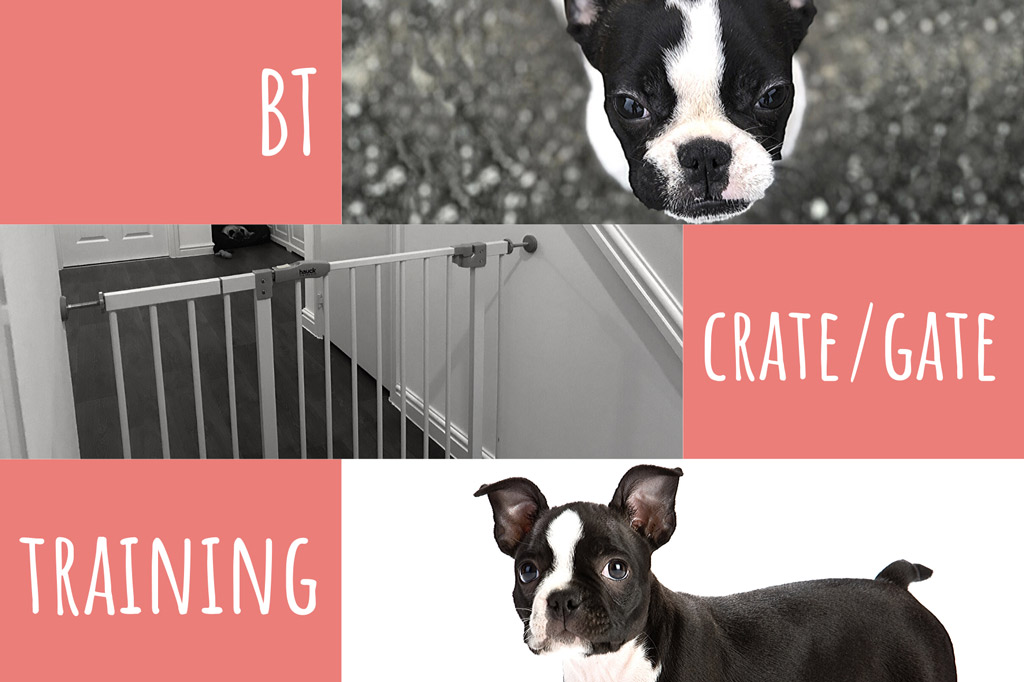
Bringing a Boston Terrier puppy home for the first time is beyond exciting! And to make sure the excitement isn’t short-lived, you also know training starts from day 1.
Crate training is a great start to help teach your dog the house rules, and you can start to crate train your Boston Terrier gradually:
- Introduce your dog to the crate, so he/she gets familiar with it.
- Encourage your Boston Terrier into the crate with treats.
- Feed your dog in the crate to create a positive association.
- Start to close the door for 30 seconds.
- Leave the room for 2 to 5 minutes.
- Leave the house for 10 minutes.
- Gradually increase the alone time.
- Use the crate at night too, from the beginning.
When I moved to London and started taking care of dogs, I realized that I was at a loss when I saw a crate. This is one of the training tools that I never came across growing up as a kid.
I took it upon myself to find out why professional dog trainers advocate for this type of training. I wanted an easy-to-follow and effortless training approach, especially as I hadn’t done this type of training before – similar to a first-time dog parent’s experience.
P.S. I started with the pros and cons of crate training to learn if there are situations when it’s not effective or appropriate as a training aid, and also if there were other alternatives.
Crate Training
Crate training is a part of house-training your puppy or adult pooch i.e. showing her the rules of her new home. It’s a method of training your Boston Terrier that serves multiple purposes:
- Open ‘den’ area: Some dogs enjoy having an open ‘den’ that they can use as a safe place where they feel secure and can retreat to get away from other pets or children. Also, it works as a bed. Use our Dog Space Zone guide to craft the ultimate space for your pooch!
- Training aid: It can be used to teach dogs to be left alone. Also, it helps with potty training. Dogs won’t willingly relieve themselves in their own beds, so they are highly motivated to “hold it” while in their crate.
- Short-term holding space: You can keep your dog for a short amount of time in his crate when you cannot supervise him.
- Veterinary advised: In some circumstances, a vet may advise the use of a crate to aid recovery after surgery.
- Transportation: Crates can help keep dogs secure and comfortable whilst travelling by car. Find out all about travel carrier training in How do I Get My Dog Into a Carrier?.
A dog crate is a tool that can especially be used to potty train, and you can stop using it (completely remove it) once your pooch knows and follows the house rules. Or, you can leave the crate as part of your dog’s safe zone, always keeping the gate open.
According to the Humane Society of the United States, you should crate your dog until she can be trusted not to destroy the house. After that, her crate should be a place that she’s happy to go to voluntarily.
While crate training your Boston, she should go inside on her own or when you give her a verbal cue, as opposed to needing to be shoved or coaxed in. Once your pooch is in, she should remain relaxed, comfortable and quiet.
Crate Training Pros
Here are some important benefits of crate training:
- Crating makes potty training easier.
- A crate is a safe place for dogs to retreat to.
- It can help to prevent destructive behaviour.
- It keeps your dog safe when alone and learning not to chew.
- A crate is the safest way for a dog to travel.
- Having a positive association with a crate will help your pooch when recovering from an illness or injury that requires restricted movement at home or at the vets.
The American Kennel Club (AKC), the Humane Society, and the American Society for the Prevention of Cruelty to Animals (ASPCA) are among the dog experts that approve of crate training in some form. However, they all caution that dogs should not be kept in crates for prolonged periods.
So, it can be argued that crate training is humane if used in a positive way. It’s a teaching tool, not a punishing tool!
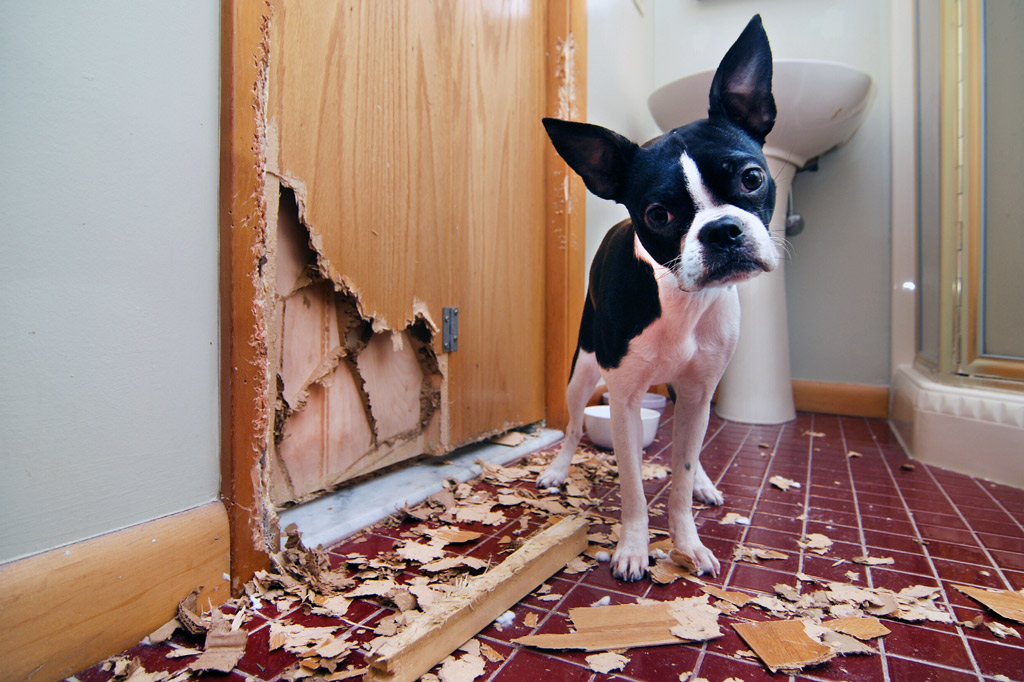
Crate Training Cons
Although crate training has important benefits, it also has some serious drawbacks when not done properly:
- Prolonged crate confinement can cause severe frustration and emotional distress in dogs.
- It can also cause physical distress, especially if the crate is too small for the dog.
- Extended periods of time in a crate causes boredom. Your dog can develop behaviour problems due to a lack of mental stimulation.
- If used as punishment, you won’t get any of the benefits and your dog will be very unhappy every time she has to go into the crate. This will compromise your dog’s quality of life.
- Not every dog is suitable for crate training. Some rescue dogs and those with severe separation anxiety have special needs and fears to overcome, which makes crate training a poor choice for them. (I say “some” rescue dogs, cause I’m aware that others feel safer in crates due to their past experiences).
Here’s a good recommendation from the American Society for the Prevention of Cruelty to Animals (ASPCA):
If your dog is showing signs of distress, crating isn’t the best choice for him. These signs include frantic attempts to escape, panting, drooling, and persistent barking or howling. Instead, use a dog-proof room with a baby gate.
For these reasons, some animal advocates like People for the Ethical Treatment of Animals (PETA), believe that crates are a cruel practice.
“Most people don’t realize that animals who are caged for extended periods of time often become aggressive, withdrawn, hyperactive, and/or severely depressed, and they can also develop other problems, such as eating disorders.”
PETA
Sadly, they are probably right, especially when not done correctly and for the wrong reasons.
However, if done correctly, like most dog experts advocate, crating your dog is safe and humane.
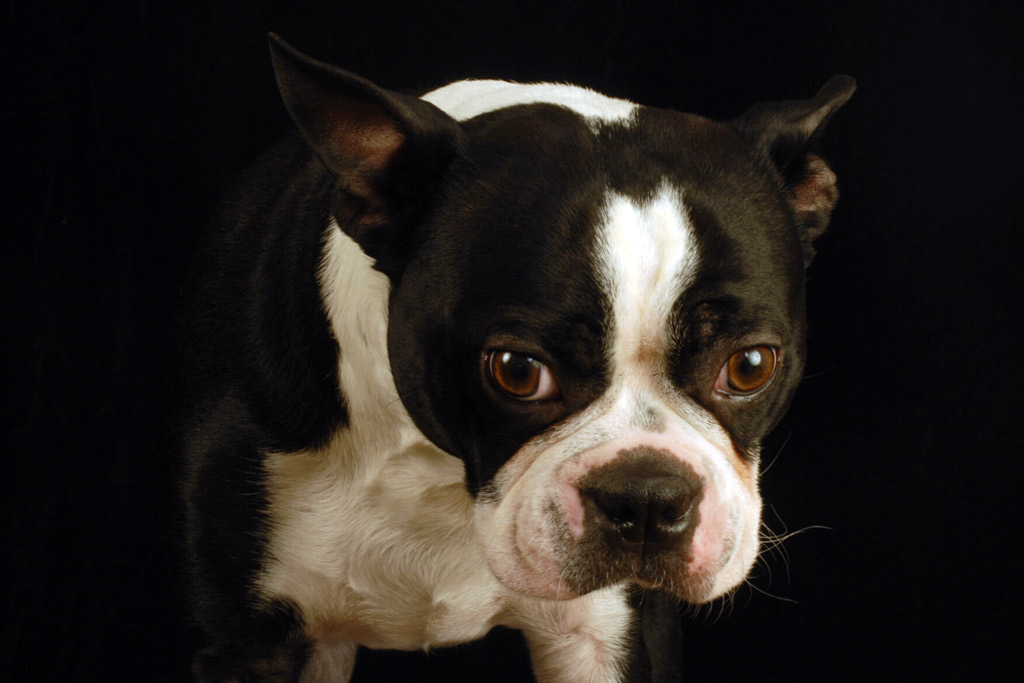
Crate Training Alternatives
To crate or not to crate your Boston Terrier – that is the question.
It’s a personal choice.
As long as you do it correctly, without jeopardising your dog’s mental and physical wellbeing, it can be a good training choice.
Although I fostered dogs who are used to sleeping in their crate, I personally prefer using a gate to temporarily keep my dogs in an area, which also serves as their safe zone. I use this method to teach the new dog the house rules and for when the dog is home alone for a little while.
If you have a dog that is not a good candidate for using a crate, or if you simply don’t like the idea of a cage, there are a few other options you could try.
Here are some crate alternatives:
- A playpen: This is similar to a crate, but it’s larger, with no roof and with no floor. It’s a great solution for open-plan household, so you can keep your dog away from danger and teach her to be happy in her safe zone.
- A dog or baby gate: Put your dog in a small dog-proof room behind a baby gate. Again, this alternative gives your dog more freedom.
P.S. Scroll down to the Crate Training Essentials section for some guidelines.
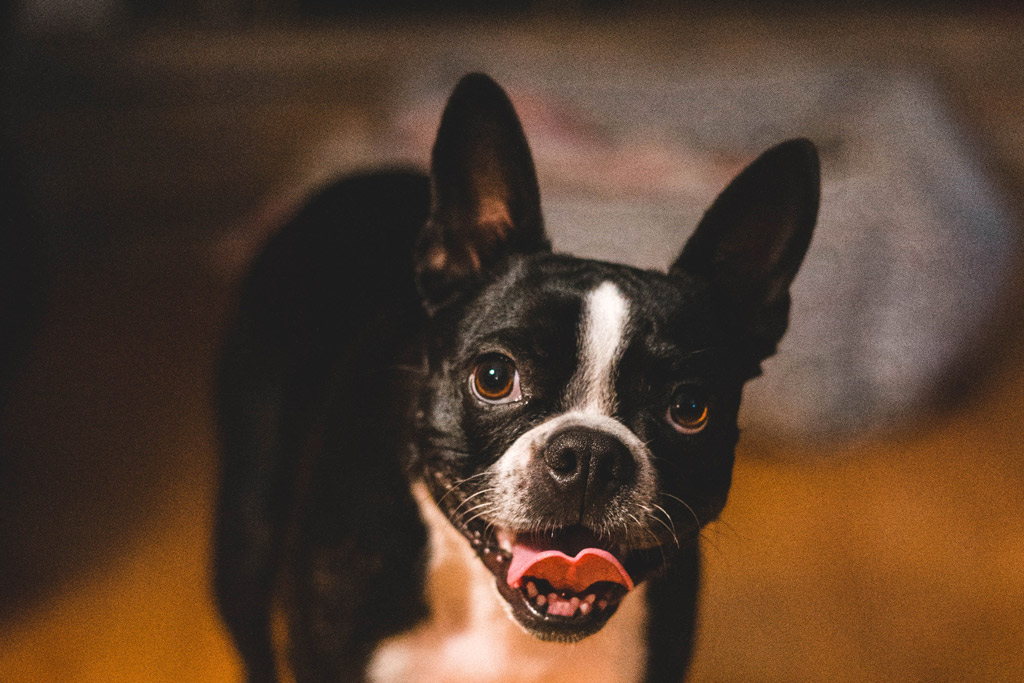
How to Crate Train a Boston Terrier
Regardless if you want to use a crate, a playpen or a gate to limit the space your Boston terrier is allowed at times…
Here’s how to crate train your Boston Terrier (pup, adult and rescue) safely and in a humane way:
Note: if you are not using a crate, substitute “crate” for “gated space” or “playpen” during these steps.
#1 – Introduce Your Boston Terrier to the Crate
Set the crate in the designated area for your pup or put in your dog room. You want to make it part of her environment. Leave the door of the crate open and let your Boston get used to it being there in the environment.
Insider Tip: Tie the doors open so your pup can’t accidentally close it.
If she shows interest in it by sniffing it or even looking inside, reward her. Any interaction with the crate should earn praise, cuddles or/and a treat!
#2 – Encourage Your Boston Terrier into the Crate
Toss a favourite treat or toy into the carrier at random times. The idea is to associate the crate with only pleasant, fun, yummy things each time your pup explores it.
Again, reward her even if she steps in with just one foot. Also, don’t ever force her to step in since this would only have the opposite desired effect.
Over time, your Boston should be happy to be lured in further and further, until her whole body is inside. Depending on your dog, this could take a few minutes or a few days.
On the other hand, you may not need any reinforcement at all and find that your pooch takes an immediate liking to it.
#3 – Feed Your Boston Terrier in the Crate
When your pooch is happy to step inside the crate by herself, reinforce this behaviour by feeding her inside.
Don’t close the door yet; just place her feeding bowl or a food dispenser toy (a Kong) inside. Once she’s eating inside the crate without hesitation, start placing place her food further away from the door of the crate.
#4 – Start to Close the Door for 30 Seconds
When your Boston Terrier is happy to eat her meals in her crate, close the door for a second or two. Then open it immediately and give her a treat if she has stayed calm. This will teach your pup that there’s nothing to fear when the door is shut.
Slowly extend the time in the crate (door closed) by 30 seconds to a minute during each practice session. Reward your pooch each time she tolerates it well.
Insider Tip: If your dog reaches her limit at say five minutes, back up to four on the next session and start again from there.
#5 – Leave the Room for 2 to 5 Minutes
The best time to start this step is after your puppy has a walk or other type of exercise, and has eaten. If your pup is tired and has a full stomach, she will feel like having a nap.
If she’s okay with being alone for a bit, then leave the room for a minute or two. Gradually increase the duration until you don’t have to be present whilst your pup naps.
Be sure to reward her each time she stays quiet!
#6 – Leave the House for 10 Minutes
When your Boston is comfortable inside her crate and no longer whines or cries when you leave the room, leave the house for 10 or 15 minutes.
To make it easier, leave her a high-value treat or a chew toy so she can entertain herself. Meanwhile, you should stay outside where you can hear her and hopefully see how she’s doing.
Insider Tip: If your pooch gets anxious easily, place some stress-reducing oils for anxiety or fear, like Lavender Essential Oil.
For more stress-relieving tips, check out Boston Terrier Separation Anxiety – 16 Things that Help and Boston Terrier Fears and Anxiety – Triggers and Remedies blog posts.
#7 – Gradually Increase the Alone Time
When your dog stays quiet for 10 or 15 minutes, start extending the time that she’s alone.
Insider Tip: Again, if you find a breaking point where your puppy can’t tolerate the duration, back up to the last successful time and start over on the next training session.
#8 – Use the Crate at Night Too
The first night is going to be hard for two likely reasons:
- Your pup is going to cry and whine as you have never heard before.
- You are going to wake up every few hours to take your puppy to potty to her spot.
Some people suggest moving the crate closer to your bedroom or to literally place it in your bedroom. This is a personal choice.
In my household where I foster, I have clear rules that I follow with my dogs from the first day. Every pooch sleeps in her safe zone in the hallway, which is gated. I can perfectly hear her from my room and she’s well aware where I am.
I believe the sooner you establish the house rules and you stick to them, the sooner your pup will learn about them. She’s going to constantly challenge you to bend them. Like human kids, dogs test your boundaries and it’s up to you to keep them in place.
It can be quite tough and disheartening at times, but I always remind myself that I am raising a confident pooch with love and respect (rules). If she’s not taught now, I will cause her further distress in the future… and that will make both of us very unhappy.
And what do I do about the crying and the whining?
You can probably guess by now… I IGNORE her. Sounds terribly harsh, but if I pay any attention to her, I am reinforcing that unwanted behaviour.
I only pay attention to her once she’s quiet. This is what positive reinforcement training is all about.
Of course, I make sure to observe that it’s “I don’t want to be alone” cry, not a scared cry because of thunder or a whine because she needs to relieve herself.
When puppies whine in the crate at night, it can be hard to tell if they need to potty or if they just want out of the crate. If you are aware of her potty schedule, you might be able to guess. However, if you take her to potty and she doesn’t need to go out, then ignore the whining.
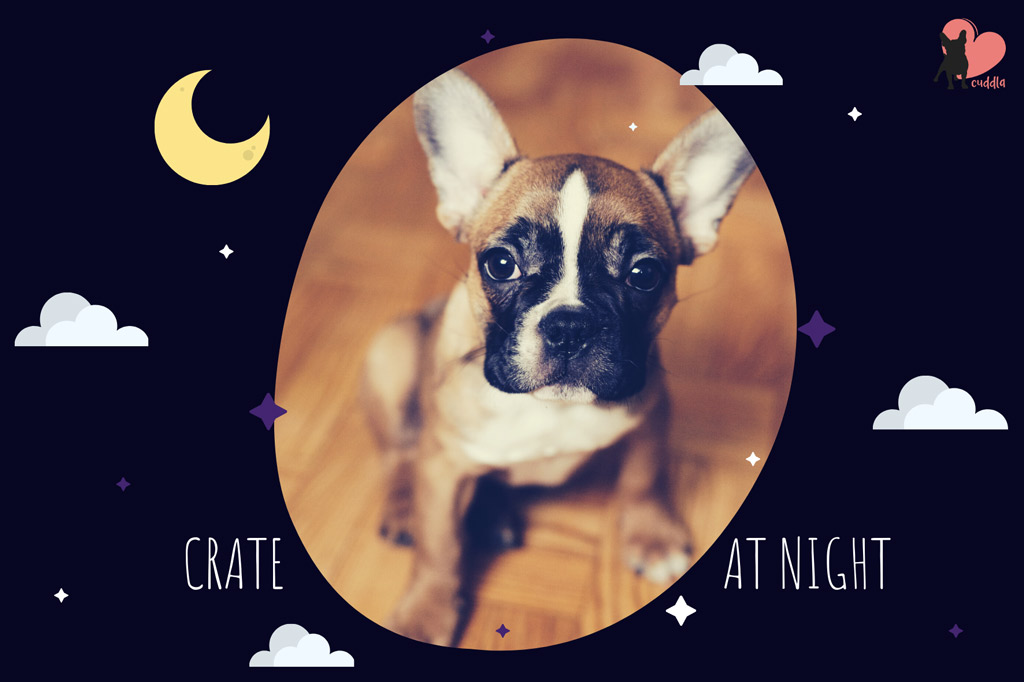
Crate Training Essentials
Here are the tools that I mentioned to crate your Boston Terrier:
A Dog Crate
There are a variety of styles of dog crates, but the most popular one is a collapsible crate with wire mesh walls like MidWest Basic Indoor Crate (available in Amazon).
This one has an easy-to-clean tray at the bottom made of heavy-duty plastic. Metal trays may rust, and they are heavier, making it harder to move the crate.
Pick a crate that is an appropriate size for your Boston Terrier during the duration of crate training. This can take longer than you expect and you run the risk of your pooch outgrowing her crate!
The crate I mentioned comes with a “divider”, solving this problem. The divider can be moved to give your puppy more space as she grows.
How big of a crate does a Boston Terrier need?
Your pup’s crate should be large enough for her to stand up and move around in, but not so large that she can create a separate ‘bathroom’ space. Although dogs don’t soil where they sleep and eat, if the crate is big enough, they have the opportunity to do so.
The ideal crate size for Boston Terriers is 24 x 30 inches (61 x 76 cm) or 24 x 36 inches (61 x 91 cm).
A Dog or Baby Gate
I mentioned earlier; this is the option that works for me. A wall fixed baby gate can also provide a secure boundary.
A Dog Playpen
Playpens come in handy when you live in a small apartment or/and open-plan space. A sturdy and foldable playpen like Midwest Foldable Metal Exercise Pen (also available in Amazon), creates an enclosed dog space accessible by a gate or door.
Also, portable playpens like Ruff ‘n Ruffus Portable Foldable Playpen can be useful if you want to put it away and of sight when you are home or to take with you on holidays.
A Dog Treat Camera
Surveillance gear is an option to consider if you want to keep an eye on how your Boston is doing and reward her behaviour (treat dispenser function). Cameras like Furbo allow you to be two clicks away from communicating with your pup wherever you are.
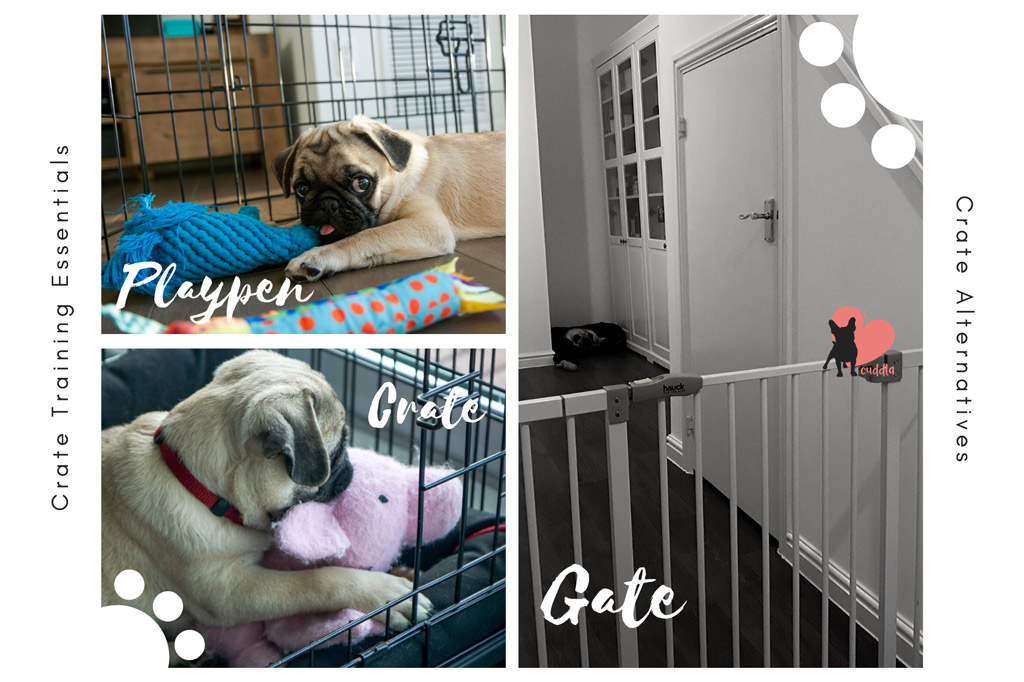
Safe Crate Training Guidelines
Finally, crate training should be done with your dog’s safety and wellbeing in mind (source).
How Long Should a Boston Terrier Be in a Crate?
Most owners wonder how long should a puppy be in a crate. See the table below to help you determine a schedule or how long you can crate your dog, based on their age.
According to The Association of Professional Dog Trainers (APDA), you shouldn’t crate an adult dog for more than four or five hours at a time. They warn that puppies should not be left longer than their small bladders can handle.
On average, here’s how long your dog can stay in her crate before going for a potty break:
| Dog’s age | Maximum time in a crate |
| 8-10 weeks | 30-60 minutes |
| 2-3 months | 2 hours |
| 4 months | 4 hours |
| 18 months | 6 hours |
| Adult healthy dogs | 6-8 hours |
Read also: Can a Boston Terrier Be Left Alone? For How Long?

What’s Next
If you’re just getting started with training your new pooch, you probably are facing the 3 most common challenges:
- Potty training.
- Leash pulling.
- Biting/nipping.
If so, I may be able to help with that. Click here to visit our Dog Training Essentials, where you will get a 3-part mini audio series + the everyday resource used by a well-known dog trainer.
You can also get this using the button below. Happy training! 😉
